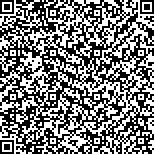| 引用本文: |
陈琳,邱渊铭,赵洋,阳晶晶,曹思慧,何灏龙,杨宗保,常小荣,刘琼,刘密.电针对应激性溃疡小鼠十二指肠黏膜内CD4、CD8、SIgA及炎症因子表达的影响[J].湖南中医药大学学报,2023,43(9):1672-1678[点击复制] |
|
| |
|
|
| 本文已被:浏览 1843次 下载 860次 |
| 电针对应激性溃疡小鼠十二指肠黏膜内CD4、CD8、SIgA及炎症因子表达的影响 |
| 陈琳,邱渊铭,赵洋,阳晶晶,曹思慧,何灏龙,杨宗保,常小荣,刘琼,刘密 |
| (湖南中医药大学针灸推拿与康复学院, 湖南 长沙 410208;厦门大学医学院, 福建 厦门 361102) |
| 摘要: |
| 目的 观察电针对应激性溃疡小鼠的十二指肠黏膜结构与组织内白细胞介素-1β(interleukin-1β, IL-1β)、肿瘤坏死因子-α(tumor necrosis factor, TNF-α)、免疫功能相关分化抗原4(cluster of differentiation 4, CD4)、分化抗原8(cluster of differentiation 8, CD8)及分泌型免疫球蛋白A(secretory immunoglobulin A, SIgA)的影响,探讨电针对十二指肠黏膜损伤修复的作用机制。方法 SPF级雄性KM小鼠40只,随机分为空白组(n=12)和造模组(n=28),造模组采用束缚冷应激法复制应激性溃疡模型。模型制备成功后,将造模组24只小鼠随机分为模型组、手三里组及足三里组,每组8只。空白组与模型组小鼠每天进行束缚处理;手三里组与足三里组小鼠则进行电针干预,每日1次,连续7 d。采用HE染色观察十二指肠黏膜组织形态变化,ELISA和RT-PCR法检测十二指肠黏膜组织中IL-1β、TNF-α、CD4、CD8、SIgA含量与mRNA表达。结果 HE染色结果显示,空白组小鼠十二指肠黏膜组织上皮完整,结构清晰,腺管结构正常;与空白组比较,模型组十二指肠黏膜组织固有层明显变薄,有广泛的炎性细胞浸润;与模型组比较,手三里组及足三里组病理切片提示十二指肠黏膜组织固有层厚度增加,固有层细胞增加,排列整齐。与空白组比较,模型组十二指肠黏膜组织内IL-1β、TNF-α、SIgA 蛋白含量及mRNA表达量明显升高(P<0.01),CD4、CD8蛋白含量及mRNA表达量下降(P<0.01)。与模型组相比,足三里组IL-1β、TNF-α、SIgA蛋白含量及mRNA表达量下降(P<0.05或P<0.01),CD4、CD8蛋白含量及mRNA表达量升高(P<0.05或P<0.01);手三里组IL-1β、TNF-α蛋白含量及mRNA表达量下降(P<0.05)。与手三里组相比,足三里组CD8蛋白含量及mRNA表达量上升(P<0.05),SIgA mRNA表达量下降(P<0.05)。结论 电针干预对应激性溃疡小鼠十二指肠黏膜损伤具有修复作用,其作用机制可能是通过调节十二指肠黏膜组织中IL-1β、TNF-α、CD4、CD8及SIgA表达水平,降低炎症反应,改善免疫功能紊乱,从而促进十二指肠黏膜的修复,且足三里穴较手三里穴调节十二指肠黏膜免疫功能的效果更佳。 |
| 关键词: 应激性溃疡 十二指肠黏膜 电针 足三里 手三里 作用机制 |
| DOI:10.3969/j.issn.1674-070X.2023.09.018 |
| 投稿时间:2023-05-10 |
| 基金项目:国家自然科学基金项目(81202770);湖南省自然科学基金项目(2023JJ30457);湖南省中医药科研计划项目(C2022027);国家中医药管理局2022年青年岐黄学者培养项目(国中医药人教函〔2022〕256号);湖南省“芙蓉学者奖励计划”项目(湘教通〔2020〕58号);湖南省中医药管理局一般项目(B2023109);长沙市自然科学基金项目(kq2208183);湖南中医药大学校级科研基金项目(2021XJJJ013);湖南中医药大学校级研究生创新课题(2022CX108)。 |
|
| Effects of electroacupuncture on the expressions of CD4, CD8, SIgA and inflammatory factors in duodenal mucosa of mice with stress ulcer |
| CHEN Lin,QIU Yuanming,ZHAO Yang,YANG Jingjing,CAO Sihui,HE Haolong,YANG Zongbao,CHANG Xiaorong,LIU Qiong,LIU Mi |
| (School of Acupuncture-moxibustion, Tuina and Rehabilitation, Hunan University of Chinese Medicine, Changsha, Hunan 410208, China;School of Medicine, Xiamen University, Xiamen, Fujian 361102, China) |
| Abstract: |
| Objective To observe the effects of electroacupuncture on the duodenal mucosa structure and interleukin-1β, IL-1β, tumor necrosis factor (TNF-α), cluster of differentiation (CD4), cluster of differentiation (CD8) and secretory immunoglobulin (SIgA) in duodenal mucosal tissue of mice with stress ulcer, so as to explore the mechanism of electroacupuncture on the repair of duodenal mucosal injury. Methods Forty SPF male KM mice were randomly divided into blank group (n=12) and modeling group (n=28). The stress ulcer model was replicated by restraint cold stress in the modeling group. After successful modeling, 24 mice in the modeling group were randomly subdivided into model group, "Shousanli" (LI10) group, and "Zusanli" (ST36) group, with 8 mice in each group. Mice in the blank group and model group were subjected to daily restraint treatment, while mice in the "Shousanli" (LI10) and "Zusanli" (ST36) groups were treated with electroacupuncture, once a day, continuously for 7 d. The morphological changes of duodenal mucosal tissue were observed by HE staining, and the content and mRNA expressions of IL-1β, TNF-α, CD4, CD8, and SIgA in duodenal mucosal tissue were examined by ELISA and RT-PCR. Results HE staining showed that the epithelium of duodenal mucosal tissue in the blank group was intact, the structure was clear, and the glandular tube structure was normal. Compared with the blank group, the lamina propria of duodenal mucosal tissue in the model group was significantly thinner, with extensive inflammatory cell infiltration. Compared with the model group, the pathological sections of "Shousanli" (LI10) and "Zusanli" (ST36) group showed thicker lamina propria of duodenal mucosal tissue and increased lamina propria cells with neat arrangement. Compared with the blank group, the protein content and mRNA expressions of IL-1β, TNF-α, and SIgA in duodenal mucosal tissue of the model group significantly increased (P<0.01), while the protein content and mRNA expressions of CD4 and CD8 decreased (P<0.01). Compared with the model group, the protein content and mRNA expressions of IL-1β, TNF-α, and SIgA in the "Zusanli" (ST36) group decreased (P<0.05 or P<0.01), while the protein content and mRNA expressions of CD4 and CD8 increased (P<0.05 or P<0.01). The protein content and mRNA expressions of IL-1β and TNF-α in the "Shousanli" (LI10) group decreased (P<0.05). Compared with the "Shousanli" (LI10) group, the protein content and mRNA expression of CD8 in the "Zusanli" (ST36) group increased (P<0.05), but the mRNA expression of SIgA decreased (P<0.05). Conclusion Electroacupuncture intervention has repair effects on duodenal mucosal injury in mice with stress ulcer, and its mechanism of action may be through regulating the expressions of IL-1β, TNF-α, CD4, CD8, and SIgA in duodenal mucosal tissue, reducing inflammatory response, and improving immune dysfunction to promote the repair of duodenal mucosal. Moreover, "Zusanli" (ST36) has better effects on regulating duodenal mucosal immune function than “Shousanli” (LI10). |
| Key words: stress ulcer duodenal mucosa electroacupuncture "Zusanli" (ST36) "Shousanli" (LI10) mechanism of action |
|

二维码(扫一下试试看!) |
|
|
|
|




